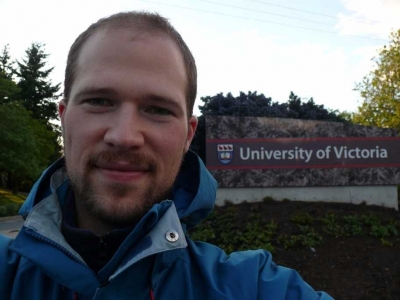Adrian High: Digital Humanities Summer Institute at the University of Victoria, Victoria Canada

Research Travel Award Winner (Graduate): Summer 2017
At the center of my research this summer was a massive wall at the temple of Delphi which contains hundreds of records of the manumissions of slaves. The earliest records date to c. 200 B.C.E., the latest to c. 100 C.E. The slaves are men and women, Greeks and not. These inscriptions constitute our best textual evidence for those at the bottom of ancient society, yet our basic knowledge of the wall and the inscriptions is lacking. For example, there are many open questions pertaining to the spatial organization of the texts on the wall: Is there an order or a hierarchy to the layout of the texts? Are women grouped with women, foreigners with foreigners, and if so, are there patterns in the language of the records that shed light on the ways in which the experience of slavery differed between gender and across ethnic origin? These are questions that cannot be answered in one summer. I identified as a first step towards answering such questions the need to create a high-resolution online visualization of the wall with annotations of all the visible inscriptions (prototypes of my work are available here: http://bit.ly/pwp_s-wll-proto01 (South Wall); http://bit.ly/pwp_e-wll-proto01 (East Wall)).
The funding made available through the Summer 2017 Research Travel Award financed my participation in the Digital Humanities Summer Institute 2017, a rigorous external training program at the University of Victoria, Canada. The week-long course I enrolled in was about making data easier to share and connect online using a method called LOD (Linked Open Data). I emerged with a better understanding of ways in which my project can grow and become an asset in the open data realm. Making data open, structured, and easily exchangeable has a host of positive effects, as I learned. They include, for instance: others using and enriching your data; data being preserved through replication; formation of a community of users; generating helpful feedback and review from users. With these factors in mind, I started building a database of all the inscriptions I identified on the photographs of the Polygonal Wall in my possession. The next steps for this project will be to improve the database, publish documentation, and develop crowdsourcing and feedback capability.





